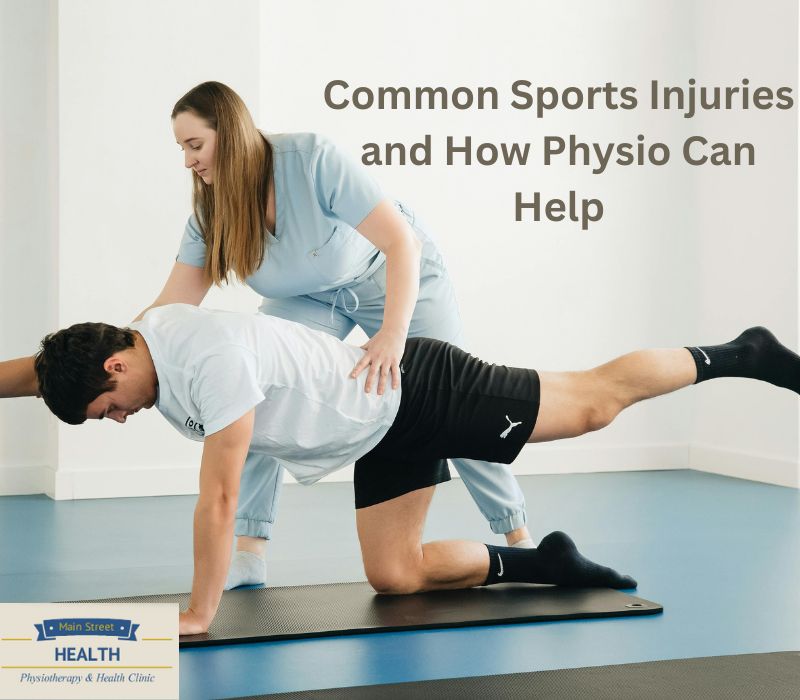
Knee injuries can significantly impact mobility and daily activities, whether due to sports injuries, arthritis, or post-surgical recovery. One of the most effective solutions to manage knee pain and promote stability is knee bracing. In Hamilton, physiotherapists often recommend knee braces as part of a comprehensive rehabilitation plan. But how do you know which brace is right for you? We spoke to a leading physiotherapist at Main Street Health to provide insights into knee bracing Hamilton and how it benefits various conditions.
Understanding Knee Bracing Hamilton
Knee braces are designed to provide support, stability, and pain relief for individuals suffering from knee-related conditions. Whether you are an athlete recovering from an injury, a senior managing arthritis, or someone dealing with chronic knee pain, a well-fitted knee brace can help you maintain an active lifestyle. Knee bracing Hamilton services offer various options, from custom-made braces to over-the-counter solutions tailored to your needs.
When Do You Need a Knee Brace?
Physiotherapists often recommend knee bracing for the following conditions:
- Ligament Injuries (ACL, MCL, PCL, LCL): Braces help stabilize the knee and prevent excessive movement that could lead to further damage.
- Osteoarthritis: Specialized knee braces can help offload pressure from affected joints, reducing pain and improving mobility.
- Post-Surgical Recovery: After knee surgery, a brace can provide the necessary support to promote healing and prevent re-injury.
- Patellar Instability: If you have recurring dislocations or kneecap instability, a brace can help maintain proper alignment.
- Sports Injuries: Athletes frequently use braces to protect their knees from high-impact activities and reduce the risk of future injuries.
Choosing the Right Knee Brace Hamilton
Selecting the right knee brace depends on your specific condition and level of activity. Knee brace Hamilton experts categorize braces into several types:
- Prophylactic Braces: Designed for athletes to prevent injuries during high-risk sports like football or basketball.
- Functional Braces: Used after an injury to support healing and prevent further damage.
- Rehabilitative Braces: Often prescribed post-surgery to limit movement while the knee heals.
- Unloader Braces: Ideal for individuals with osteoarthritis, as they shift weight away from the affected joint.
- Patellar Stabilizing Braces: Help keep the kneecap in proper alignment to prevent instability.
A professional physiotherapist can assess your needs and recommend the most suitable option based on your condition.
The Role of Physiotherapy in Knee Bracing Hamilton
A knee brace alone is not a complete solution. Physiotherapy plays a crucial role in ensuring optimal recovery and strengthening the knee. At Main Street Health, physiotherapists incorporate knee bracing with personalized rehabilitation programs, including:
- Strengthening Exercises: Targeting the muscles around the knee to enhance stability.
- Flexibility Training: Stretching techniques to improve joint mobility.
- Gait Training: Correcting walking patterns to prevent strain on the knee.
- Pain Management Techniques: Using modalities like ultrasound therapy and TENS to reduce discomfort.
Regular physiotherapy sessions combined with the right knee brace Hamilton services can lead to a faster and more effective recovery.
Sports Massage Hamilton: Enhancing Recovery and Performance
For athletes and active individuals, integrating sports massage Hamilton into their routine can further support knee health. Sports massage helps to:
- Reduce muscle tension and improve circulation around the knee.
- Enhance flexibility and prevent injuries.
- Speed up recovery after intense physical activity.
- Alleviate pain and discomfort caused by overuse or strain.
Whether you are recovering from a knee injury or looking to optimize your athletic performance, combining sports massage Hamilton with knee bracing and physiotherapy can be highly beneficial.
Expert Advice from Main Street Health
According to Hamilton’s top physiotherapists, knee braces should be part of a broader treatment plan. Here are some key takeaways from our discussion with Main Street Health:
- Get a professional assessment: Not all knee braces are suitable for every condition. Consult a physiotherapist to determine the right fit.
- Follow a structured rehab plan: Bracing should be combined with exercises, manual therapy, and proper rest.
- Ensure proper fit and comfort: Ill-fitting braces can cause more harm than good. Custom-fitted options provide the best results.
- Use sports massage as a complementary treatment: Massage therapy helps relieve tension, promote circulation, and enhance recovery.
Conclusion
If you’re looking for expert knee bracing Hamilton services, Main Street Health offers personalized care to help you regain mobility and confidence. Whether you need a knee brace Hamilton solution for injury prevention, post-surgical recovery, or arthritis management, their team of skilled physiotherapists can guide you toward the best option.
For athletes, integrating sports massage Hamilton into your recovery plan can provide additional benefits, ensuring that your muscles and joints remain in peak condition. Don’t let knee pain hold you back—seek professional guidance today and take the first step towards a healthier, more active lifestyle.






